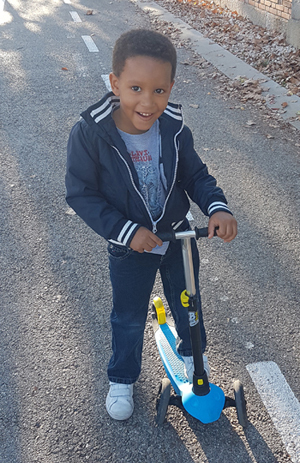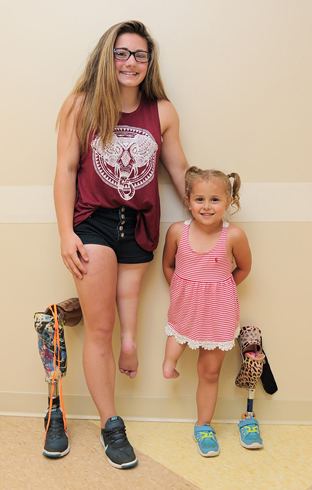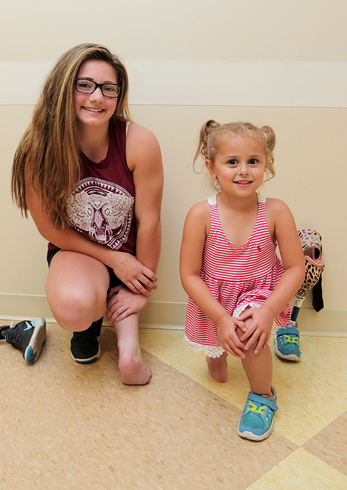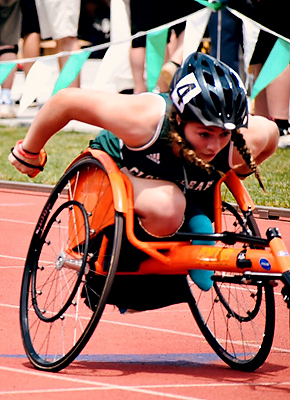Rotationplasty
What is rotationplasty?
Rotationplasty, also called Van Nes rotationplasty, is a rarely done surgical procedure where the patient’s lower leg is rotated backwards and the joints are relocated to serve new roles. The ankle and foot function as a knee joint within a prosthesis. The knee functions as the hip joint.
When is rotationplasty recommended?
Rotationplasty can be used as an alternative to leg amputation. At the International Center for Limb Lengthening, we sometimes use rotationplasty for the most severe forms of congenital femoral deficiency (CFD), also called proximal femoral focal deficiency (PFFD), if there is no true hip joint and a significant limb length discrepancy. Rotationplasty may also be performed when a child has a large section of bone removed from the thigh bone (femur) during cancer treatment.
What are the benefits of rotationplasty?
Rotationplasty allows the patient to keep much more of the affected leg than amputation. While the backwards position of the leg may seem shocking, it allows for the patient to have much greater mobility than he/she would have with a fully prosthetic leg. Patients are able to walk, run, jump and participate in sports and other activities.
What happens to the leg during the rotationplasty procedure?
If the hip is severely deformed or unstable, and the femur is very deficient, then a Van Nes rotationplasty can be done to create a functional limb. The upper femur is removed, and the knee is then raised up to the level of the hip. The ankle is now at the level of the opposite normal knee. The leg is then rotated 180° so that the foot is facing backwards. The knee is stabilized to the pelvis and serves as the new hip joint. The ankle now serves as the new knee. After the procedure, a spica cast is applied for six weeks.
At what age is the rotationplasty performed?
For cases of severe congenital short femurs, surgery is generally performed between the ages of two and four, with ages three to four being most common. Children under the age of four will not have memory of this procedure. In less common situations, rotationplasty may be performed for older children, and even in adults.
How long does the rotationplasty procedure take?
The surgery typically takes between six to eight hours. Blood transfusions may need to be done.
How long must patients stay in the hospital after the rotationplasty?
Usually the patient will be admitted to the intensive care unit for one or two days. Time spent in the hospital afterward varies, but is usually five to six days.
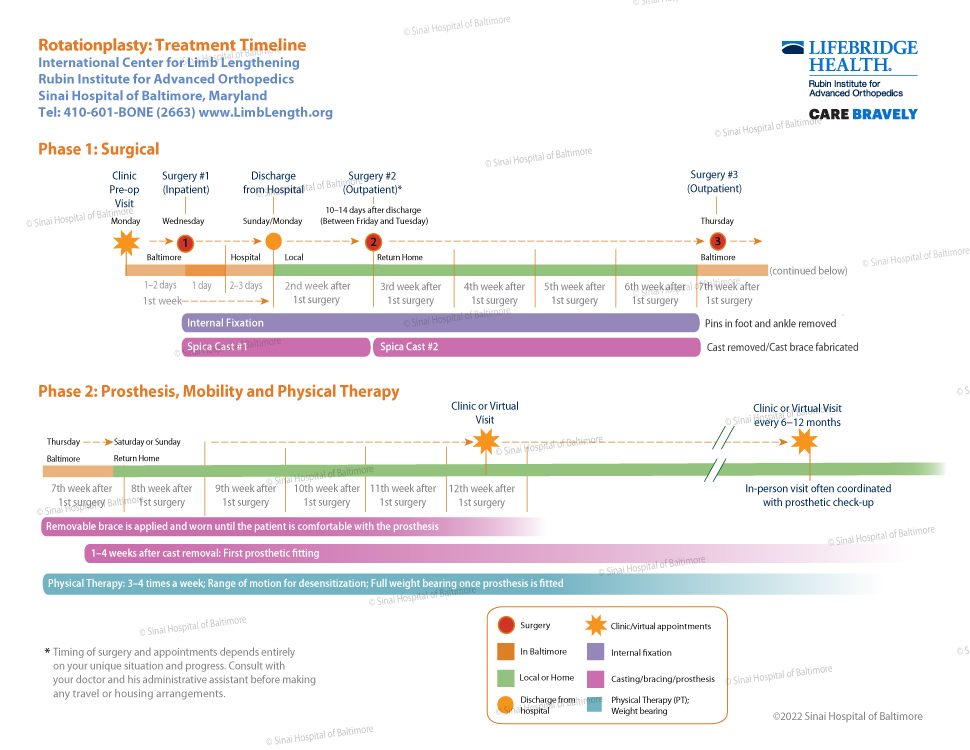
For a downloadable PDF of this rotationplasty treatment timeline, click here.
How much of the body does the spica cast cover?
The spica cast will extend from the patient’s lower chest or stomach to their ankles.
How long must the spica cast be worn?
The spica cast must be worn for approximately six weeks. Two weeks after surgery, once the swelling has gone down, the cast is changed in a second surgery; this allows the surgeon to examine the surgical site. That second cast is left in place until 6 weeks after the original surgery. A third short surgery occurs at approximately that six week mark. During this surgery, the pins that were inserted into the foot and ankle are removed and the cast is converted into a removable brace. This allows the prosthetist to be able to measure for a prosthesis, while still providing some protection.
How mobile will the patient be after leaving the hospital?
While in the spica cast, the child can be transported in a wheelchair or stroller. Walking usually begins within 2-4 weeks once the prosthesis is completed and fitted to the patient.
What is the timeline between surgery and returning home?
The majority of families stay in Baltimore for the two-week period until the first cast change. After the cast change, the family can usually return home if that is a convenient option, and then return in four weeks for the next step. After the last cast is removed, most families still stay in Baltimore for about two weeks in order to have the prosthetist measure and build the prosthesis, since it may be difficult to find a prosthetist near their homes that is used to making this type of prosthesis.
How long does physical therapy last?
Physical therapy is vital to the success of the procedure. This will help the patient learn to use the new prosthesis, as well as strengthen the ankle and improve the range of motion of the leg. Physical therapy does not begin until after the cast is removed at six weeks. At that time, therapy begins for range of motion and desensitization of the skin. Once the prosthesis is available, the child may begin weight bearing. Physical therapy usually starts at 3-4 times per week for 6-12 months, and is gradually weaned down to a home therapy program. Most toddlers are enrolled into infants and toddlers programs near their homes and are provided on-going therapy through that local program.
Why choose the International Center for Limb Lengthening for rotationplasty surgery?
Van Nes rotationplasty surgery is only performed in a few centers around the world. At the International Center for Limb Lengthening, we have a lot of experience doing this operation; we perform the procedure about four times per year. Our patients benefit from our team-centered approach with world-renowned surgeons and specialized physician assistants, nurses and physical therapists. We help patients having Van Nes rotationplasty surgery achieve their best possible result.
The International Center for Limb Lengthening at the Rubin Institute for Advanced Orthopedics at Sinai Hospital was specifically designed for the complex treatment of limb deformities. The building has physician offices, six operating rooms specially designed for limb lengthening and deformity correction procedures, and physical therapy gyms all right on site at Sinai Hospital. An apartment-style housing facility, the Hackerman-Patz House, was built across the street from the hospital to accommodate families during treatment. The Baltimore Ronald McDonald House is also available for families to stay at while a child undergoes treatment, and it provides a shuttle service to the International Center for Limb Lengthening. Both housing options provide a supportive family atmosphere.
